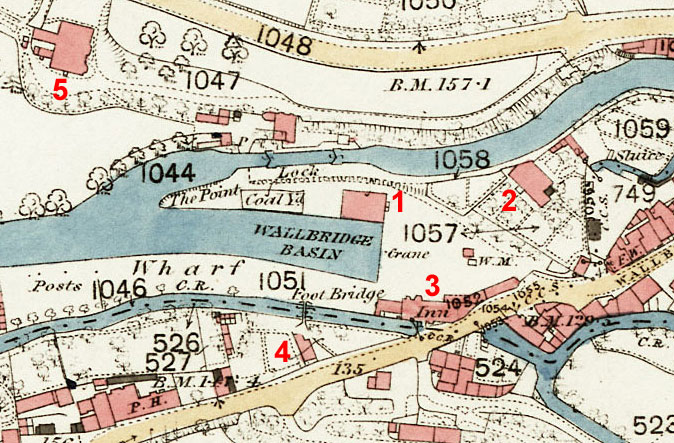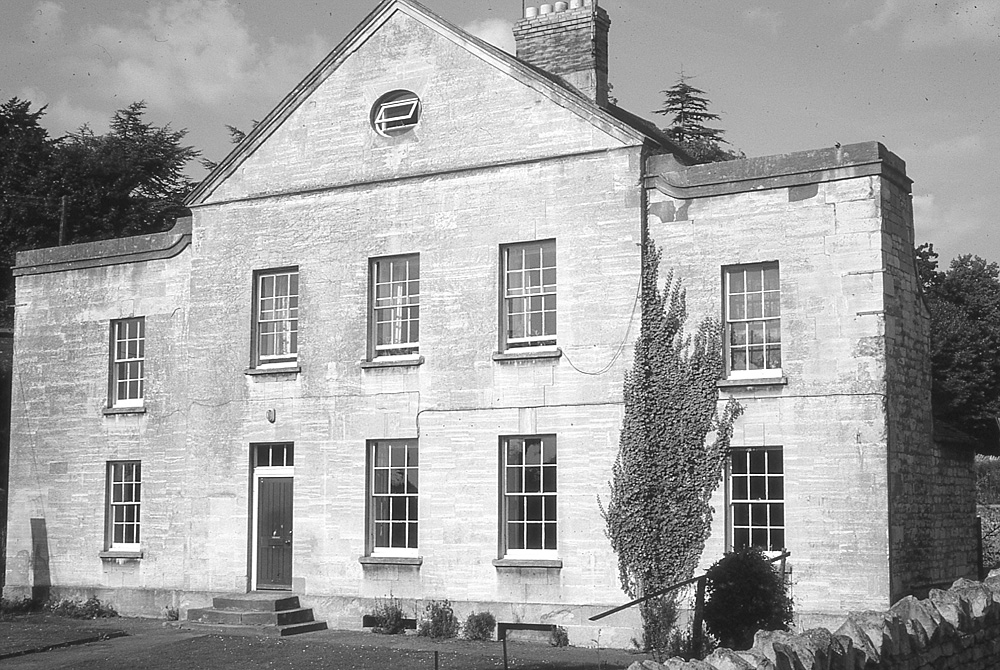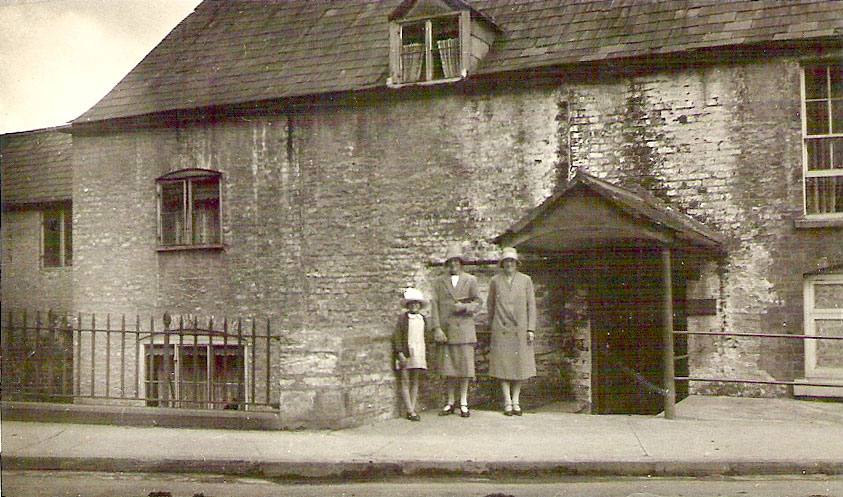

When the canal opened in 1779, Wallbridge was a small suburb of Stroud centred on a bridge over the River Frome which probably took its name from the walkers or fullers working at the nearby woollen cloth mill. Ten years later the Thames & Severn Canal branched off the Stroudwater to continue the waterway through Stroud and join the River Thames near Lechlade.
The area around the basin included a warehouse for perishable goods (1 described elsewhere) and pens for storing coal and later road stone. At the head of the basin, there was a crane for lifting particularly heavy items, and nearby was a weighing machine for wagons. To the north-east was the headquarters of the Stroudwater Company (2), and to the south was the Ship Inn and a small warehouse (3) which were leased to the coal merchant managing the wharf until 1877.
In that year, the Ship was leased to a brewery and a new house was built for a wharfinger (4) which was linked directly to the wharf by a bridge over the River Frome. On the hillside across the valley was Farhill House (5), which was the home of Joseph Grazebrook, an early Clerk to the Stroudwater Company. Both of these buildings have been demolished.


The headquarters of the Stroudwater Company provided offices for the administrative staff and also accommodation for the Clerk who was in charge of the day-to-day running of the Company. Note that the upper right window is a fake - there is no room behind it.
It was in this building that the bulk of the archive material featured in this website was created. It is apparent that very little was thrown away, and we now have one of the best surviving archive of any canal company in the country.
The building is now occupied as offices.


This building was originally the home of the Stroudwater Company's agent who sold coal on behalf of the Company, and it evidenly made sense to obtain a licence so liquors could be sold to thirsty boatmen. After the Company gave up trading coal in 1832, the pub and surrounding wharf were leased jointly to a succession of coal merchants.
As trade on the wharf was diminising, in 1877 the Ship was leased separately to Stroud Brewery and later to Dursley Brewery and then to Brimscombe Brewery. For many years, the pub was the headquarters of the Stroud Rugby Football Club, and the 'Long Room' was frequently used for smoking concerts following home matches. Following a decline in business, the building became a private house in 1915, and it was demolished for road widening in 1959.
In 1788, King George III visited Wallbridge on horseback accompanied by Queen Charlotte and the three eldest princesses in open carriages. Flags and triumphal arches were erected and great crowds assembled. His Majesty was wearing a blue coat with a scarlet collar and a cocked hat, and as he raised his hat to acknowledge the cheers, a rent was visible under the arm of his coat. The royal party stopped at the junction of the Stroudwater and Thames & Severn Canals to watch a barge pass down through Lower Wallbridge Lock.
Change in leasing of wharf and pub in 1877 from Rent Books D1180/2/54-55.
First licence for the Ship Inn noted in D1180/1/3 p69.
Later history of the Ship Inn from Minute Books D1180/1/6-8 and Stroud N&J 28 Aug 1959.
Royal Visit reported in P H Fisher, Notes & Recollections of Stroud 1986, p125-26.